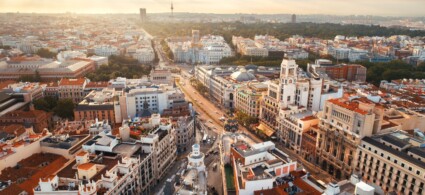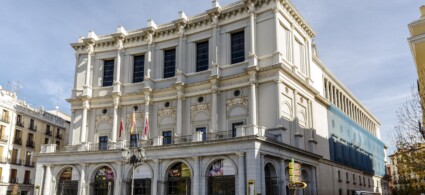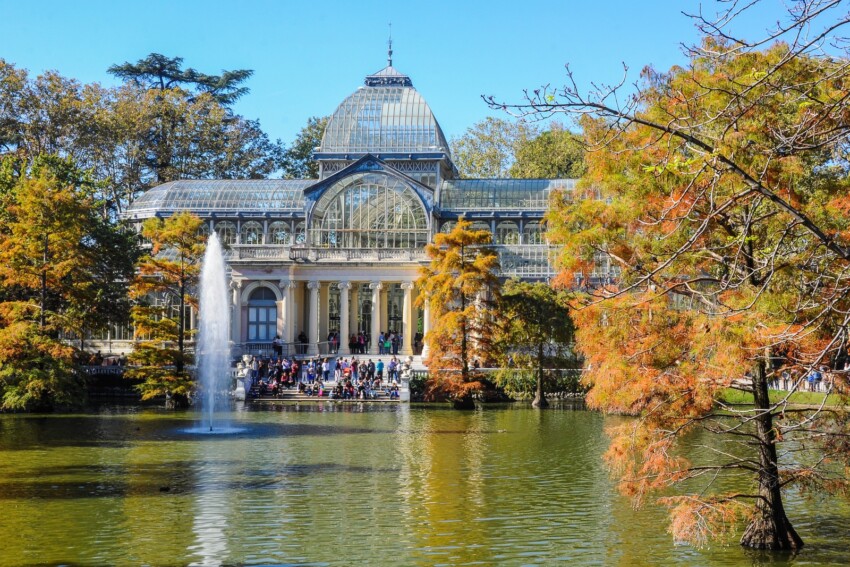

Madrid is not an expensive city by the standards of European capitals, but on holiday it’s easy to relax and overspend… and then it’s a pain when you get home! In order not to cry on your return, play it smart and take advantage of the many free or low-cost cultural and entertainment opportunities Madrid has to offer.
You can see masterpieces of art history such as Picasso’s Guernica or Velázquez’s Las Meninas for free, stroll down the city centre’s grand boulevards and squares, catch a cool breeze in the city parks, attend live music concerts, photograph quirky contemporary buildings or old buildings with vintage charm.
Here is a list of 10 things to do for free in Madrid.
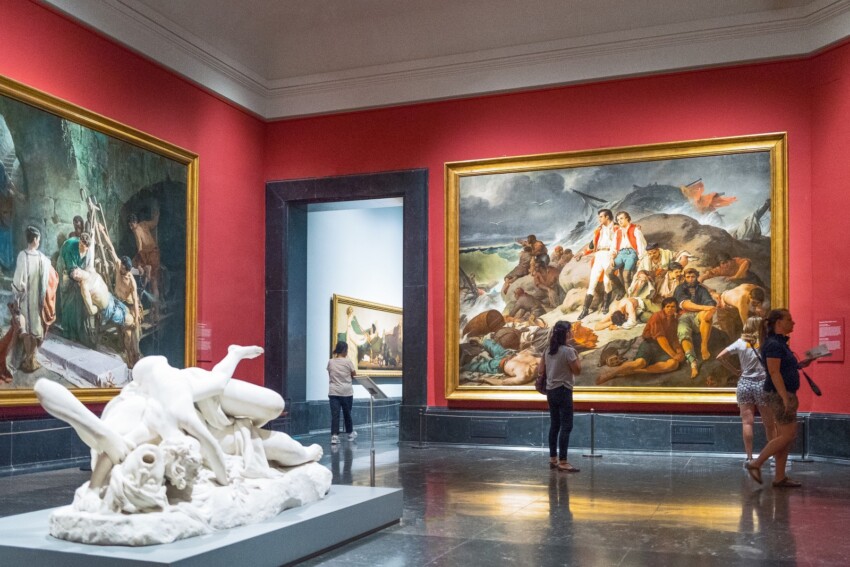
All the biggest museums in Madrid have times when admission is free. Yes, you read that right: you can admire the masterpieces of the Prado, the Reina Sofía and many other museums without spending a euro!
Here are the free admission hours of some of Madrid‘s most famous museums:
In addition to the paid museums that offer free admission on certain days and at specific times, there are many other museums that are always free. These include the Palacio de Cristal and the Palacio de Velazquez in the Retiro Park, the National Library Museum, the Lope de Vega House-Museum and the Planetarium.
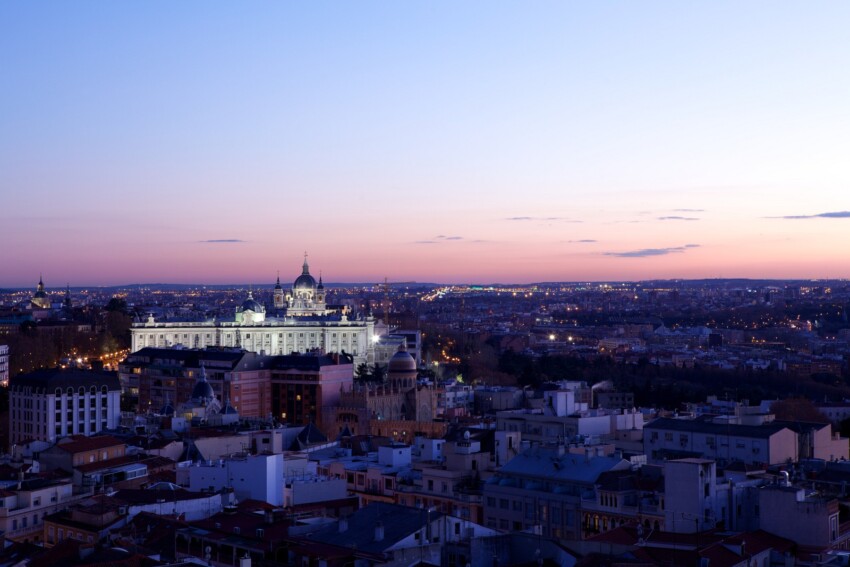
Visiting the Royal Palace in Madrid is not a luxury for nobles: Europe’s largest royal residence can be visited free of charge from Monday to Thursday from 4 p.m. to 6 p.m. from October to March and from 6 p.m. to 8 p.m. from April to September.
Without having spent a euro, you can admire 50 of the more than three thousand rooms of this opulent palace, richly decorated with tapestries, stuccoes, paintings, glass, brocades and velvets: a walk through luxury at no cost!
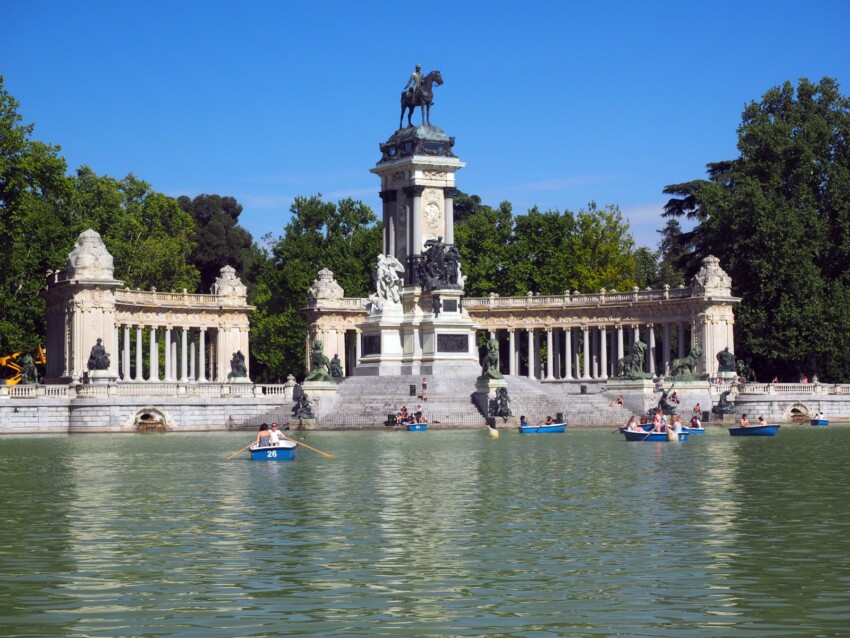
Visits to museums and monuments can be tiring, but you can recover your strength by taking a break – free of charge, of course – in one of Madrid‘s beautiful parks and gardens.
The most famous is undoubtedly the Retiro Park, with its man-made pond crossed by rowing boats and the monumental colonnade behind it: it is a vast park and you could spend half a day here!
Joggers and walkers can spend hours relaxing in Madrid Río, a green area not far from the central Puerta del Sol with more than ten kilometres of running and cycling routes, as well as leisure areas and pedestrian paths.
Also free of charge, every day and at all hours, are the sumptuous gardens of the Royal Palace.

In all cities walking is free, but not in all cities walking is nice. In Madrid it is: whether you explore the winding streets of the historic quarters or the wide avenues of the centre, the Spanish capital is wonderful to walk around.
Unmissable stops on any holiday in Madrid are the very elegant Gran Vía, a wide boulevard resulting from an impressive urban planning project, and the main squares in the centre including Puerta del Sol, Plaza Mayor and Plaza de Cibeles.
You can go shopping, sip a coffee at an outdoor table and photograph key images of Madrid such as the statue of the bear and the strawberry tree, the km 0 plaque that symbolically marks the centre of the town, the historic Tio Pepe advertising sign, the Cibeles fountain and the Arco de Cuchilleros.
To discover the Madrid of the Madrileños, there is no better way than to stroll through the popular neighbourhoods, such as the historic La Latina and the multi-ethnic Lavapiés, while to experience the legendary Madrilenian night going from one bar or club to another, choose Chueca, the trendy neighbourhood, or Malasaña, the alternative neighbourhood.
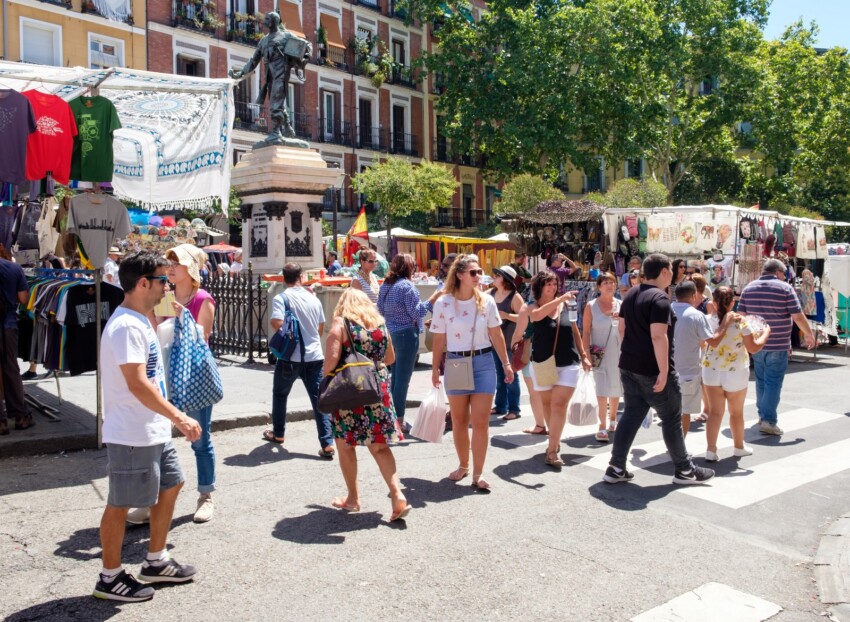
An unmissable tradition for every Madrilenian is Sunday at the Rastro Market: originally a flea market, it is now an ever-expanding giant with thousands of stalls.
You can buy everything, both used and new, but you don’t have to pull out your wallet to enjoy a fun day out. Browse the stalls, take colourful photos of the merchandise on display or of the colourful characters who come around, and savour the unique atmosphere of Madrid’s largest open-air market.
Two lively indoor markets are the Mercado de San Miguel, Madrid’s gourmet weather, and the Mercado de San Fernando. They are worth a visit even if you don’t plan on shopping because they are special places with a very special atmosphere and will make you feel like a local.
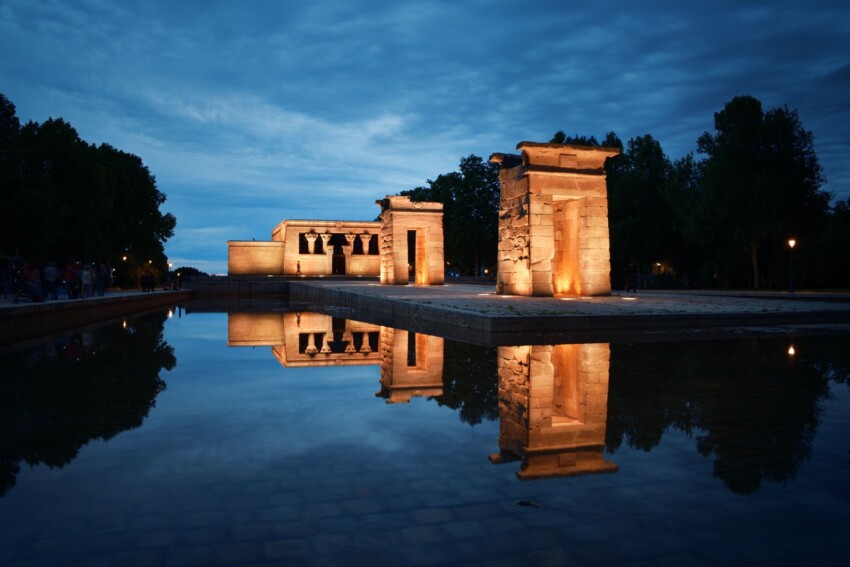
Inside the Parque del Oeste in the Moncloa area is Madrid’s most curious monument: the Temple of Debod, an authentic 2nd-century BC Egyptian temple that was disassembled, transported from its original location along the banks of the Nile to Madrid and reassembled piece by piece. Admiring it from the outside is free and if you do it at night also particularly impressive!

Atocha Station is the place for those who leave, those who arrive and those who want to catch a chill. Madrid’s oldest railway station, a stone’s throw from the Prado Museum, is an architectural marvel that deserves to be visited on a par with a famous museum.
Many Madrileños come here on the hottest summer days to seek refreshment in the lush tropical garden that has been created on the site of the old station.
Don’t give up going out at night because you’re afraid of spending too much: Madrid’s nightlife is so varied that you can even find ideas for low-cost entertainment.
If you love music, you are in the right place: in Madrid there are live concerts 7 nights a week and some clubs offer interesting live performances for free.
Here are some places where you can listen to music for free or almost free:
Madrid’s clubs and discos, on the other hand, all charge a fee, but as they fill up very late you can pay a reduced price by entering before 1pm. Another way to spend less on disco entry is to check the social media of the club you are interested in to see if there are any special offers.
Madrid is not only a city of prestigious museums where you can admire the masterpieces of the past, but also a hotbed of new ideas and cultural ferment, as evidenced by the staggering number of cultural centres in the city’s most diverse neighbourhoods that organise exhibitions, film screenings, dance and theatre performances, meetings and other cultural events free of charge or at a very low price.
Some of these are housed in historical, innovative or simply curious buildings that deserve to be included in the list of things to see in Madrid.
An architectural symbol of modern Madrid is the CaixaForum cultural centre, housed in an original building converted from a former power station. Designed by one of the most famous contemporary architecture studios, the CaixaForum has two features that make it unique: the eccentric vertical garden and the texture of the oxidised Corten façade cladding.
If you are in the Lavapiés neighbourhood, take a look at the headquarters of Casa Encendida, a very active cultural centre: it is a monumental neo-Mudejar style building inaugurated in 1913.
In a city as exuberant as Madrid, it is possible as well as a lot of fun to create personalised itineraries based on one’s tastes, interests or curiosities.
For instance, if the romantic charm of old cinemas has a strong hold on you, go on the hunt for Madrid’s historical cinemas. A must-see is the Cine Doré in Lavapiés: still functioning today (it is the projection room of the Spanish Filmoteca), it is a beautiful building with a rich exterior façade, impossible to miss.
Another historic cinema still functioning today is the Capitol on Gran Via, while the Cine Avenida, on the same street, has become an H&M clothing shop: go in and take a look and you will recognise at a glance the original lobby, stalls and staircase.
Another idea for a thematic itinerary is street art: wander the streets of Madrid with your camera around your neck, ready to capture the most beautiful works of famous international street artists or young locals.
City Card allow you to save on public transport and / or on the entrances to the main tourist attractions.

